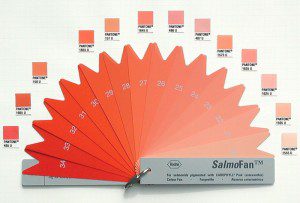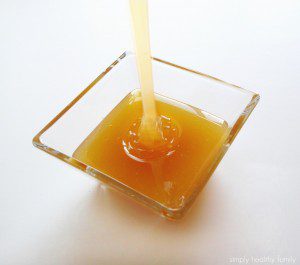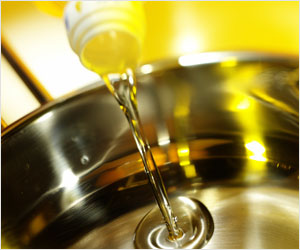By Deane Alban
Contributing Writer for Wake Up World
The quality of your life now and in the future depends on how well your brain functions, so it only makes sense to eat for your brain instead of for convenience, your taste buds, your waistline, or your wallet. It’s not just the kinds of foods you eat, it’s the quality of those foods that makes the difference between helping or harming your brain.
I’ve recently written about how most of the so-called extra virgin olive oils sold isn’t extra virgin, and may not even be olive oil and talked to you about what’s wrong with buying your meat at the supermarket.
Now, I want to warn you about a few more food scams and myths you need to watch out for and how to be sure you are buying genuine, quality foods.
The “Atlantic Salmon” Scam
Fish is widely touted as being “brain food” because it can be one of the few dietary sources of brain-essential omega-3 fatty acids. But only fatty fish like salmon that are wild-caught contain this nutrient in significant amounts.
The nutrient quality of fish varies tremendously and fish fraud runs rampant. (1) You often don’t get what you think you are buying.
According to the Environmental Defense Fund (EDF), most salmon sold in US is farm-raised then incorrectly labeled “Atlantic salmon”. Wild Atlantic salmon is endangered so it can’t be caught commercially. This goes for salmon you buy at stores or eat in restaurants. Over 60% of the fish eaten in the US and 43% of the fish eaten worldwide is farm-raised. (2)
Farmed salmon doesn’t contain omega-3”²s, one of the main the reasons you are eating it! There are other serious problems with eating farm-raised fish. Since it takes up to 15 pounds of “fish feed” (made from “undesirable” fish and “chicken pellets”) to grow one pound of farmed fish, contaminants get concentrated. (3) You don’t even want to know what’s in “chicken pellets”, but I’m going to tell you anyway – not just chicken parts of all kinds (like feathers and beaks) but even chicken poop!
Farm-raised fish are also fed antibiotics to help them survive their crowded and contaminated environment.
And you can’t judge the quality of salmon by its color either. Stores have figured out that customers won’t buy salmon if it’s not pink, so farm-raised salmon is dyed to match a desired shade. Stores choose from a variety of pink dyes manufactured by pharmaceutical giant Hoffman-La Roche.

See the SalmoFan dye swatches on the left? Notice SalmoFan is trademarked? The pharmaceutical giant provides the dyes, and the color swatches. Hmmmm.
The Environmental Defense Fund (EDF) recommends eating only Alaskan wild salmon — either fresh or canned — as this is the only kind that is low in contaminants and high in omega-3s. (4) One of the few reliable sources of wild Alaskan salmon is Vital Choice Wild Seafood and Organics.
The Bitter Truth About “Healthy” Sweeteners
White sugar is inexpensive and unhealthy – no big surprise here. High fructose corn syrup is even cheaper, which is why it’s the sweetener of choice of many food manufacturers. But it’s disappointing to learn that more expensive, supposedly higher quality sweeteners like agave syrup or honey aren’t healthy either. I’m really bummed about agave — I live in the southwest and thought I was eating healthy and locally.
Honey is just as high in fructose as white sugar and agave is actually much higher. Fructose has been promoted as a healthy sweetener because it doesn’t raise blood sugar levels. Instead it raises blood fructose levels, which is possibly worse. High fructose diets increase all the markers for cardiovascular disease and increase the risk for diabetes, obesity, and fatty liver disease. High fructose diets also reduce the production of BDNF, a brain chemical that promotes formation of new brain cells. Low levels of BDNF lead to depression, dementia, and possibly Alzheimer’s.
Learn more about why white sugar and added fructose are so bad for your brain here.
Proponents of honey will point out that it contains trace enzymes, minerals, amino acids, and B vitamins making it healthier than white sugar. (5) This is true but only if you are eating raw, unfiltered honey. A shocking study by Food Safety News found that 75% of honey carried by major stores is so ultra-filtered that it no longer contains any pollen. By FDA standards, it shouldn’t even be considered honey! (6) If you’re going to buy honey for health benefits, pick some up at your local farmers’ market or natural food store; otherwise you are wasting your money. Look specifically for raw honey since pasteurized honey’s enzymes are destroyed by heat.
 The best sweeteners that don’t wreak havoc on your brain are rice syrup and stevia. Rice syrup is made from sprouted rice and contains no fructose. An excellent brand is Lundberg Family Farms, a California grower of organic rice. If you can’t find it at your local health food store, you can order it from Amazon here. Rice syrup makes a great substitute for honey and can be used interchangeably in recipes.
The best sweeteners that don’t wreak havoc on your brain are rice syrup and stevia. Rice syrup is made from sprouted rice and contains no fructose. An excellent brand is Lundberg Family Farms, a California grower of organic rice. If you can’t find it at your local health food store, you can order it from Amazon here. Rice syrup makes a great substitute for honey and can be used interchangeably in recipes.
Stevia is an herb that gets its sweetness from a non-caloric protein found in its leaves. But even stevia is not immune to adulteration. Some brands contain sugar, other sweeteners, or even silica (sand)!
I personally use SweetLeaf Stevia which tastes great, dissolves easily, and doesn’t have any ingredients you don’t want. But whatever stevia you try, be sure to thoroughly read the label.
“Healthy” Fats You Should Avoid
Vegetable oils like canola, safflower, and sunflower are not the health foods they’ve been made out to be. In the United States, our intake of polyunsaturated vegetable oils has tripled in the last 50 years, about the same time Americans started getting fatter. And sicker.
Vegetable oils are chemically unstable and readily react with oxygen, turning into cholesterol and saturated fat in our bodies, exactly what we were told consuming these vegetable oils would avoid! They are a main source of unhealthy omega-6 fatty acids which contribute to chronic inflammation. If you have allergies or anything that ends in “itis” (arthritis, dermatitis, or colitis), you have inflammation. Inflammation is also responsible for a “who’s who” of major illnesses including cancer, diabetes, heart disease, liver disease, and mental illness.
These vegetable oils are unstable and, when heated, turn into trans fats. Trans fats have been shown to cause brain atrophy as well as heart disease, cancer, obesity, and diabetes. Trans fats are also found in processed foods that say “hydrogenated” or “partially hydrogenated” on the label.
Look at the labels on processed or prepared foods, condiments, baked goods, and snack items. You’ll find these fats lurk in almost everything, even foods from the health food store.
 A Word About Canola
A Word About Canola
Canola oil is one of the most popular vegetable oils, but few people realize where it comes from. There is no canola plant — canola stands for “Canadian Oil Low Acid” and comes from a genetically engineered form of rapeseed subsidized by the Canadian government. The name change was a PR move due to the bad connotation of the word rapeseed.
This ubiquitous oil is one you should definitely avoid. While canola is a monounsaturated fat like olive oil, it’s not cold-pressed. It’s typically extracted with high heat, pressure, and chemical solvents which lead to the formation of trans fats.
Butter — a Healthy Surprise
Ignore the myths. Butter, like coconut oil, has gotten a bad rap but is actually a healthy fat. Butter contains all of the fat-soluble vitamins (vitamins D, E and K), but is a particularly good source of vitamin A. It’s rich in trace minerals and, if you buy grass-fed butter, it’s a good source of healthy omega-3 fatty acids.
But the real key to butter’s health benefits lies in its high butyrate content. Butyrate is a fatty acid that offers several health benefits. It’s very healing to the digestive tract. It reduces chronic inflammation. It counters neurodegenerative disorders like Alzheimer’s and Parkinson’s. And it can actually help you lose weight by improving insulin sensitivity and stabilizing blood sugar levels. Eating butter with carbohydrates (on bread or potatoes, for example) lowers the glycemic index preventing blood sugar spikes and keeping you full longer.
 It should be no surprise that the healthiest butter comes from the healthiest cows. When butter comes from cows that graze on green grass, it contains high levels of conjugated linoleic acid (CLA), a compound that protects against cancer, reduces inflammation, and makes it easier to burn fat and retain muscle mass. Don’t expect ordinary grocery store butter to provide the same benefits as butter from grass-fed cows.
It should be no surprise that the healthiest butter comes from the healthiest cows. When butter comes from cows that graze on green grass, it contains high levels of conjugated linoleic acid (CLA), a compound that protects against cancer, reduces inflammation, and makes it easier to burn fat and retain muscle mass. Don’t expect ordinary grocery store butter to provide the same benefits as butter from grass-fed cows.
[For more on the health benefits of butter, check out GreenMedInfo’s database]
Everything You Need is at Your Fingertips
It’s a sad fact that so many food manufacturers have no qualms about cutting whatever corners they can to make more money, even if it means deceiving their customers and sacrificing quality. In general, you can put more trust in smaller specialty food producers like Lundberg Family Farms, US Wellness Meats or Vital Choice Seafood which have clear-cut missions to provide quality, but you still must do your homework.
Previous articles by Deane:
- The Alarming Truth About Supermarket Meat
- 18 Choices You Make Every Day That Keep You Up at Night
- Can’t Get the Hang of Meditation? Try This Instead
- Is Your Olive Oil Lying About Its Virginity?
- Stress, Telomeres, and the Secret to Prevent Aging
- Zapped: Your Brain on Electromagnetic Fields (Infographic)
- 20 Common Medications That Can Cause Memory Loss
- 5 Common Food Additives That Are Toxic to Your Brain
- Coconut Oil Cures Alzheimer’s Disease: Truth or Wishful Thinking?
- 6 Common Habits that Rob You of Essential Brain Vitamins
- The ABCs of Vitamins for Memory and Brain Health
- Eat Your Way Smart With a Brain Food Diet
About the author:
Deane Alban holds a bachelor’s degree in biology and has taught and written on a wide variety of natural health topics for over 20 years. Her current focus is helping people overcome brain fog, “senior moments”, and other signs of mental decline now, and preventing Alzheimer’s and dementia in the future.
The human brain is designed to last a lifetime, but modern life takes a greater toll on the brain than most people realize. Deane teaches the best ways to keep your brain healthy and stay mentally sharp for life at her website BeBrainFit.com.

If you've ever found value in our articles, we'd greatly appreciate your support by purchasing Mindful Meditation Techniques for Kids - A Practical Guide for Adults to Empower Kids with the Gift of Inner Peace and Resilience for Life.
In the spirit of mindfulness, we encourage you to choose the paperback version. Delve into its pages away from screen glare and notifications, allowing yourself to fully immerse in the transformative practices within. The physical book enriches the learning process and serves as a tangible commitment to mindfulness, easily shared among family and friends.
Over the past few years, Wake Up World has faced significant online censorship, impacting our financial ability to stay online. Instead of soliciting donations, we're exploring win-win solutions with our readers to remain financially viable. Moving into book publishing, we hope to secure ongoing funds to continue our mission. With over 8,500 articles published in the past 13 years, we are committed to keeping our content free and accessible to everyone, without resorting to a paywall.









